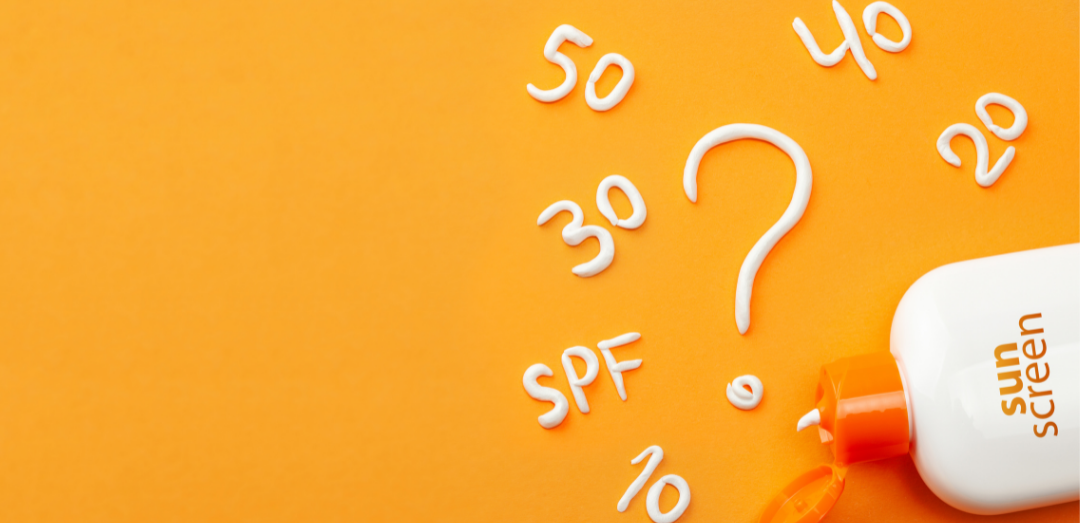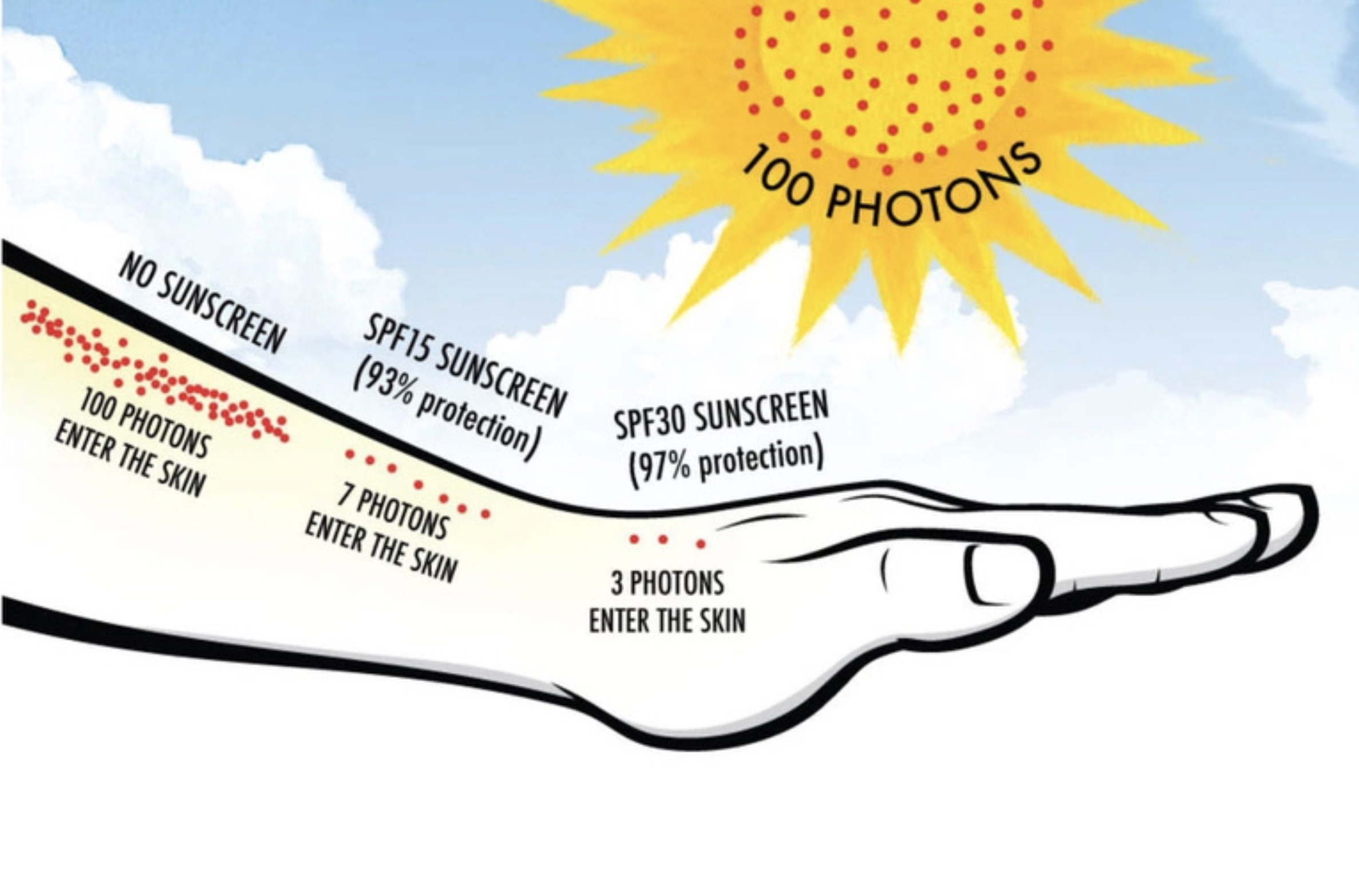
The problem with sunscreen
Most people under-apply sunscreens, using just a quarter or half of the amount required for protection.

SPF30 is the most effective sunscreen compared to lower SPF values and no sunscreen at all.
Applying half the required amount of sunscreen only provides the square root of the SPF. To put it simply, underapplying SPF 30 sunscreen only provides your skin an effective SPF of 5.5.
The environmental impact of common sunscreen products
Common sunscreens affect our environment more than you might think. That’s why the National Oceanic and Atmospheric Administration, or NOAA, created an infographic on Skincare Chemicals and Coral Reefs. The goal is to inform people about the environmental impact of sunscreen.
Do you want to reduce your environmental impact while using sunscreen?
Avoid sunscreens that contain chemicals that can bleach coral reefs white and harm marine life.
“We need to provide billions of dollars in economic and environmental services such as food, coastal protection, and tourism. These ecosystems, like our coral reefs, are facing threats from climate change, unsustainable fishing, land-based pollution, coastal development, disease, and invasive species.”
- The NOAA
This article from Rolling Stone, The Best Reef-Safe, Eco-Friendly Sunscreens, provides much-needed information about which sunscreens you can use right now that reduce your environmental impact:
- Make sure your sunscreen does not contain Oxybenzone or Octinoxate
- Avoid parabens and nanoparticles
- Instead of traditional sunscreen, try mineral-based options
The do’s and don’ts of sunscreen
Here are a few handy tips you can use to make informed decisions about the sunscreen you and your family use.
DO
- Apply zinc oxide only sunscreen with SPF 30 before going outside
- Wear clothing or hats that block UV radiation
DON’T
- Use sunscreen with a rating higher than SPF 30
- Use chemical-based sunscreens
- Go outside unprotected. Overexposure to UVA rays damage DNA, cell mutations, and hyperpigmentation
- Use sunscreens with benzoyl peroxide and hydroquinone. These chemicals are photo-synthesizers; they make skin more vulnerable to cell damage.
For more information on the do’s and don’ts of sunscreen, read this blog by clicking here. The blog breaks down sunscreen and skincare usage by age and gender.
The chemicals in sunscreens that can harm marine life
If you want to reduce your impact on the environment and keep marine life safer, avoid the following chemicals in your sunscreen. You can identify whether or not these ingredients are in your sunscreen by carefully reading the back label.
- 3-Benzylidene camphor
- 4-Methylbenzylidene camphor
- Octocrylene
- Benzophenone-1
- Benzophenone-8
- OD-PABA
- Nano-titanium dioxide
- Nano-zinc oxide
- Octinoxate
- Oxybenzone
Now that you have a greater understanding of sunscreen and its environmental impact, let’s discuss the health and safety of our sun, as well as some common misconceptions around it.
Is our sun the best source of vitamin D? Not exactly
In October of 2021, Anita Rao, a broadcaster for North Carolina public radio, interviewed Dr. Chesahna Kindred. In the interview, they discuss why you should skip the 10-step skin routine, but not SPF.
Dr. Kindred cleared up two common misconceptions that I have had about skins care and SPF:
Misconception one: We need the sun for vitamin D
The truth is that the best source of vitamin D is the food in our diets. The second best source is vitamin D supplements. The third source is through the sun.
Studies have shown that if you're low in vitamin D, and you increase your sun exposure without sunscreen, it does not bring your vitamin D levels to normal, but it does increase the risk of aging and skin cancer, so avoiding sunscreen simply is not the way to normalize vitamin D levels. Think of the sun as a vitamin D supplement to vitamin D supplement.
Misconception two: the more melanin you have, the less sunscreen you need
Some reports say for example that people with more melanin in their skin receive a natural SPF of between 8 and 13. Today, however, the minimum SPF recommendation is 30. Studies show that when African Americans get skin cancer, the cancers tend to be on their feet and nails, and very rarely on the head. Regardless of what our melanin content is, sunscreens prevent the signs of aging, so we all could benefit from sunscreen.
We are in this together. Let’s go green.

